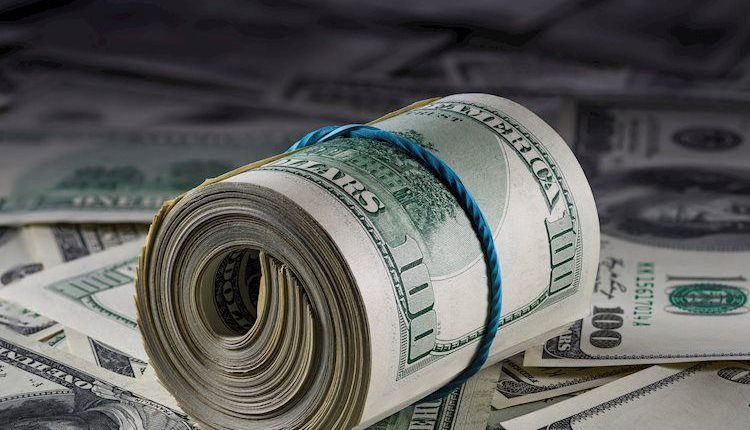- The US Dollar is trading soft against its rivals and seems to be consolidating the last session’s gains.
- The Core PCE from September matched expectations at 3.7% YoY.
- The US bond yields are mixed, while dovish bets on the Fed remain high.
- Focus now shifts to next week’s FOMC decision.
The US Dollar (USD) measured by the US Dollar Index (DXY) declined to 106.35, near the 20-day Simple Moving Average (SMA), and will likely close with a winning week. Datawise, Personal Consumption Expenditures (PCE) figures from September showed no surprises, and investors seem to be taking profits after three consecutive days of gains.
The United States economy is holding strong, as seen in the last set of economic activity figures, which included a preliminary estimate of the Q3 Gross Domestic Product (GDP) rising at an annualised rate of more than 4%. Investors now set their sights on next week’s Federal Reserve (Fed) decision on the first day of November to gather further clues on the bank’s next steps.
Daily Digest Market Movers: US Dollar declines as PCE decelerated in September, yields mixed
- The US DXY index fell toward 106.35, down by 0.25% after gaining nearly 1% in the last three sessions.
- The US Bureau of Economic Analysis reported that September’s headline PCE Price Index matched the expected value. It came in at 3.4% YoY vs the expected 3.4% and showed no changes regarding its last figure of 3.4%. The Core figure came in at 3.7% YoY, vs. the consensus of 3.7% and decelerated from its previous figure of 3.8%, which was revised lower.
- Other data showed that the Michigan Consumer Index came in higher than expected at 63.8 vs the 68 expected but failed to trigger a significant reaction from the Greenback.
- In the meantime, US Treasury yields are mixed. The 2-year rate stands at 5.03%, and the 5 and 10-year yields are at 4.79% and 4.85%, respectively.
- For next week’s Fed’s decision, markets have practically priced in a pause, but the monetary policy statement and Chair Powell’s words will be closely watched to position for the next meeting in December.
- According to the CME FedWatch Tool, the odds of a hike in the year’s last meeting declined to nearly 20%.
Technical Analysis: US Dollar Index bulls must defend the 20-day SMA to keep rising
Based on the daily chart, the technical outlook for DXY Index remains neutral to bullish as the bulls gathered significant momentum in the last sessions. To keep it, they must defend the 20-day Simple Moving Average (SMA) at 106.35.
Meanwhile, the Relative Strength Index (RSI) has a negative slope above its midline, while the Moving Average Convergence Divergence (MACD) indicator prints stagnant red bars. Furthermore, the pair is above the 20,100 and200-day SMAs, indicating a favourable position for the bulls in the bigger picture.
Supports: 106.35 (20-day SMA), 106.00, 105.70.
Resistances: 107.00, 107.30, 107.50.
US Dollar FAQs
The US Dollar (USD) is the official currency of the United States of America, and the ‘de facto’ currency of a significant number of other countries where it is found in circulation alongside local notes. It is the most heavily traded currency in the world, accounting for over 88% of all global foreign exchange turnover, or an average of $6.6 trillion in transactions per day, according to data from 2022.
Following the second world war, the USD took over from the British Pound as the world’s reserve currency. For most of its history, the US Dollar was backed by Gold, until the Bretton Woods Agreement in 1971 when the Gold Standard went away.
The most important single factor impacting on the value of the US Dollar is monetary policy, which is shaped by the Federal Reserve (Fed). The Fed has two mandates: to achieve price stability (control inflation) and foster full employment. Its primary tool to achieve these two goals is by adjusting interest rates.
When prices are rising too quickly and inflation is above the Fed’s 2% target, the Fed will raise rates, which helps the USD value. When inflation falls below 2% or the Unemployment Rate is too high, the Fed may lower interest rates, which weighs on the Greenback.
In extreme situations, the Federal Reserve can also print more Dollars and enact quantitative easing (QE). QE is the process by which the Fed substantially increases the flow of credit in a stuck financial system.
It is a non-standard policy measure used when credit has dried up because banks will not lend to each other (out of the fear of counterparty default). It is a last resort when simply lowering interest rates is unlikely to achieve the necessary result. It was the Fed’s weapon of choice to combat the credit crunch that occurred during the Great Financial Crisis in 2008. It involves the Fed printing more Dollars and using them to buy US government bonds predominantly from financial institutions. QE usually leads to a weaker US Dollar.
Quantitative tightening (QT) is the reverse process whereby the Federal Reserve stops buying bonds from financial institutions and does not reinvest the principal from the bonds it holds maturing in new purchases. It is usually positive for the US Dollar.
Read the full article here

